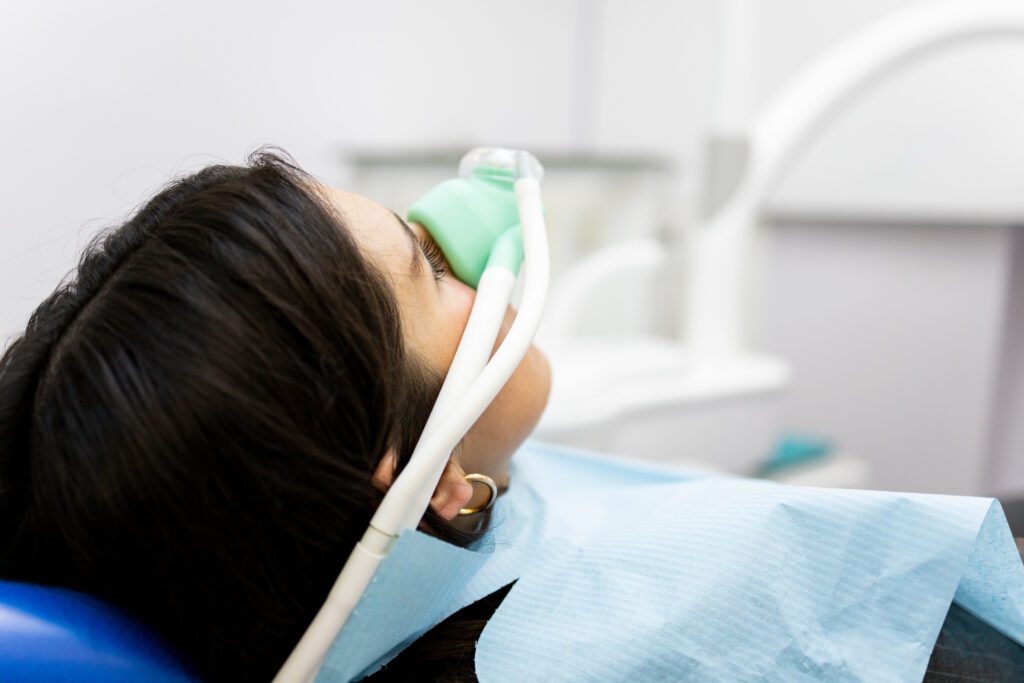We Offer Mulitple Options For Anesthesia

Often the first thing that patients, who are about to undergo oral surgery, think about is how much pain will be involved. The thought of anesthesia itself can provoke anxiety among patients.
When providing treatment, our first priority is patient comfort and safety. Several methods of anesthesia are available. The method of anesthesia that is chosen for or by a patient depends upon the nature of the surgical procedure and the patient’s level of apprehension. The following table illustrates the choices of anesthesia, a description of the anesthetic technique, and the usual indications for that technique.
Method of Anesthesia
Local Anesthetic
Description of Technique
The patient remains totally conscious throughout the procedure. A local anesthetic (e.g. lidocaine) is administered in the area where the surgery is to be performed. Local anesthetic is used in conjunction with the other methods of anesthesia in all oral surgery procedures.
Usual Indications
Simple oral surgery procedures such as minor soft tissue procedures and simple tooth extractions.
Method of Anesthesia
Nitrous Oxide Sedation with Local Anesthetic
Description of Technique
A mixture of nitrous oxide (laughing gas) and oxygen is administered through a nasal breathing apparatus. The patient remains conscious in a relaxed condition. Nitrous oxide has a sedative and analgesic (pain- controlling) effect.
Usual Indications
Simple oral surgery procedures to more involved procedures such as removal of wisdom teeth and placement of dental implants.
Method of Anesthesia
Office Based General Anesthesia with Local Anesthetic administered by an anesthesiologist.
Description of Technique
Medications are administered through an intravenous line (I.V.). The patient falls asleep and is completely unaware of the procedure being performed. Medications most commonly used are Fentanyl (opiate), Versed (benzodiazepine), Ketamine, and Diprivan or Etomidate. Supplemental oxygen is delivered through a nasal breathing apparatus and the patient’s vital signs are closely monitored.
Usual Indications
General anesthesia is available for all types of oral surgery. A patient may choose general anesthesia for simple procedures depending on their level of anxiety. Most people having their wisdom teeth removed or having a dental implant placed will choose general anesthesia. General anesthesia may be necessary if local anesthesia fails to anesthetize the surgical site which often occurs in the presence of infection.
In order to administer general anesthesia in the office, an oral surgeon must have completed at least three months of hospital based anesthesia training. In California, qualified applicants will then undergo an in office evaluation by a state dental board appointed examiner. The examiner observes an actual surgical procedure during which general anesthesia is administered to the patient. The examiner also inspects all monitoring devices and emergency equipment and tests the doctor and the surgical staff on anesthesia related emergencies. If the examiner reports successful completion of the evaluation process, the state dental board will issue the doctor a license to perform general anesthesia. The license is renewable every two years if the doctor maintains the required amount of continuing education units related to anesthesia.
Again, when it comes to anesthesia, our first priority is the patient’s comfort and safety. Our Doctors are licensed physician (M.D.) and is certified in Advanced Cardiac Life Support (ACLS). In addition, our surgical staff receives educational and practical training in Advanced Cardiac Life Support.
For certain cases, or upon a patient’s request, an outside anesthesiologist who performs general anesthesia in our office is available. Currently, this service is available through our doctors. If you have any concerns regarding the type of anesthesia that will be administered during your oral surgery procedure, please do not hesitate to discuss your concerns with your doctor at the time of your consultation.

